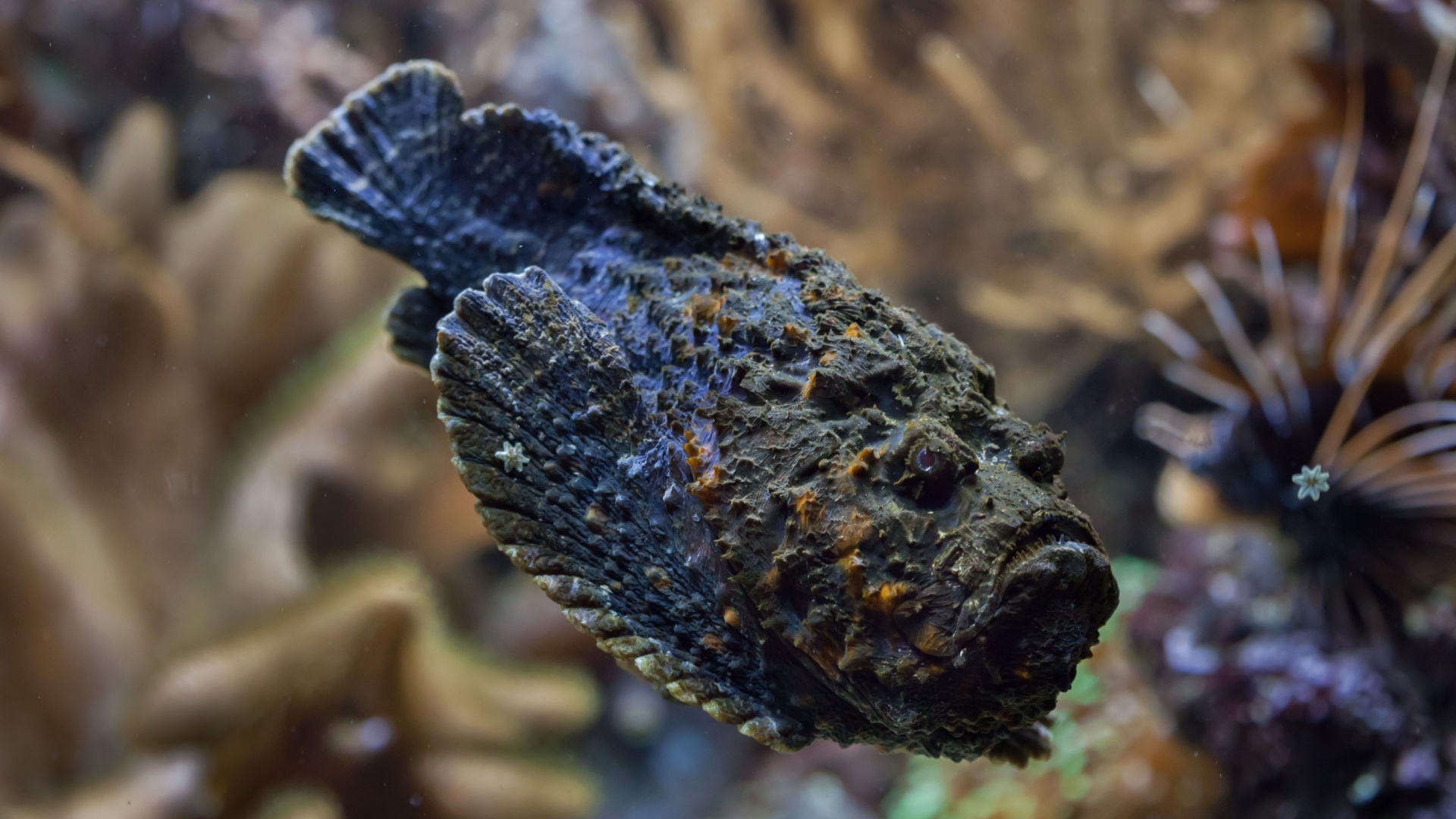The animal kingdom is full of fascinating creatures, but not all are safe to encounter. Some animals pose significant risks due to their venom, aggression, or sheer power.
While they may look harmless or intriguing, their natural defense mechanisms can be dangerous, even deadly, to humans.
Knowing which animals to avoid at all costs can help you stay safe in the wild and respect these creatures from a distance.
1. Box Jellyfish
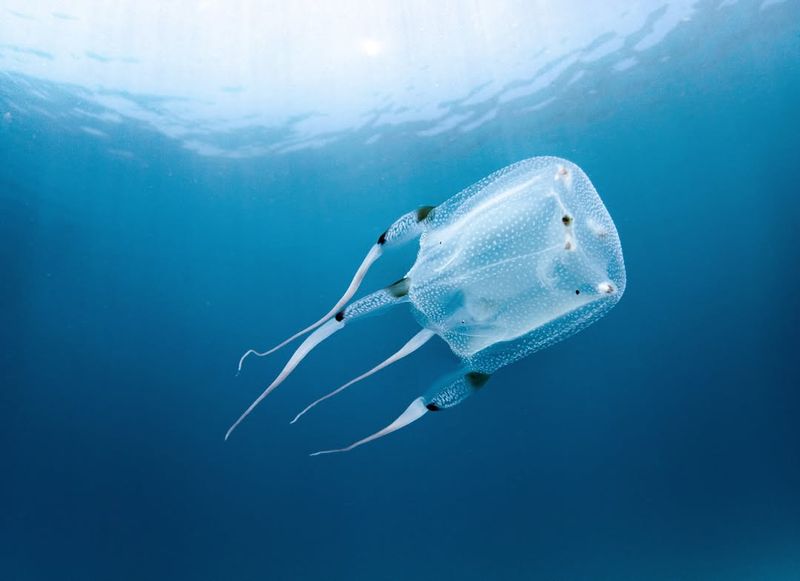
Swimming in the clear waters of the Indo-Pacific might seem inviting until you cross paths with a box jellyfish. Known for its almost invisible body and long, venomous tentacles, this creature is responsible for more deaths in Australia than sharks. Its sting can lead to cardiac arrest within minutes, making it vital to medical attention.
The box jellyfish’s venom is among the most lethal in the world. While most jellyfish stings result in pain and temporary discomfort, this jellyfish’s sting can cause not only excruciating pain but also severe skin necrosis.
The venom contains toxins that attack the heart, nervous system, and skin cells. Swimming in areas known to be jellyfish habitats requires caution. Wearing protective clothing and adhering to local warnings can be lifesaving measures. If stung, vinegar can be used to neutralize the venom tentacles before seeking immediate medical help.
2. Saltwater Crocodile
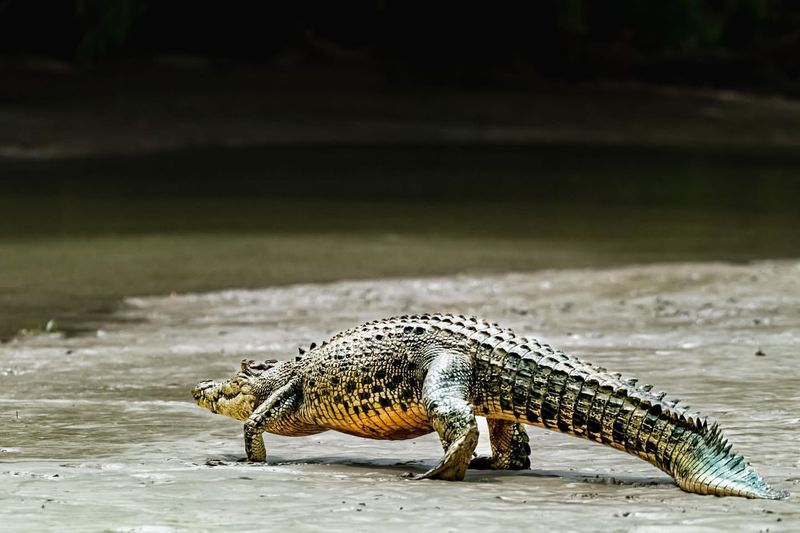
Lurking in the murky waters of Southeast Asia and Northern Australia, the saltwater crocodile is a force to be reckoned with. As the largest of all living reptiles, these predators are not only massive but incredibly powerful, capable of reaching lengths of over 20 feet.
Saltwater crocodiles are known for their aggressive nature and territorial behavior. They possess the strongest bite of any animal, making them apex predators in their habitat. A surprise encounter with one can be fatal, as these creatures have perfected the art of ambush hunting.
Avoiding areas where saltwater crocodiles are known to inhabit is crucial, especially during the breeding season when they are most aggressive. Observing from a safe distance and heeding local advisories can ensure safety. Should you find yourself in crocodile territory, steer clear of riverbanks and murky waters, as these are prime locations for a crocodile attack. Respect and caution are key when navigating their domain.
3. African Elephant
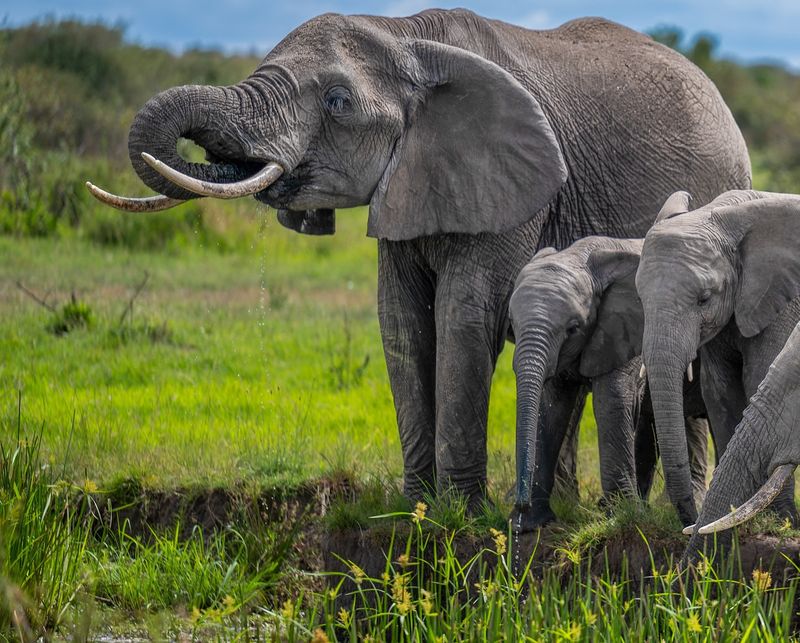
While often perceived as gentle giants, African elephants can be incredibly dangerous under certain circumstances. As the world’s largest land animals, they have immense strength and can become aggressive if they feel threatened or provoked.
Elephants are social creatures, often found in herds which they protect fiercely. An encounter with a defensive elephant can lead to serious injury or even death. Their ability to charge at speeds up to 25 mph makes them formidable opponents.
When in elephant territory, maintaining a respectful distance is crucial. Observing elephants from afar reduces the risk of provoking an unintended reaction. Guided tours with experienced professionals offer the safest way to enjoy these magnificent creatures. If an encounter feels imminent, remaining calm and slowly retreating can help diffuse the situation. Understanding and respecting their space is essential for coexistence.
4. Cape Buffalo
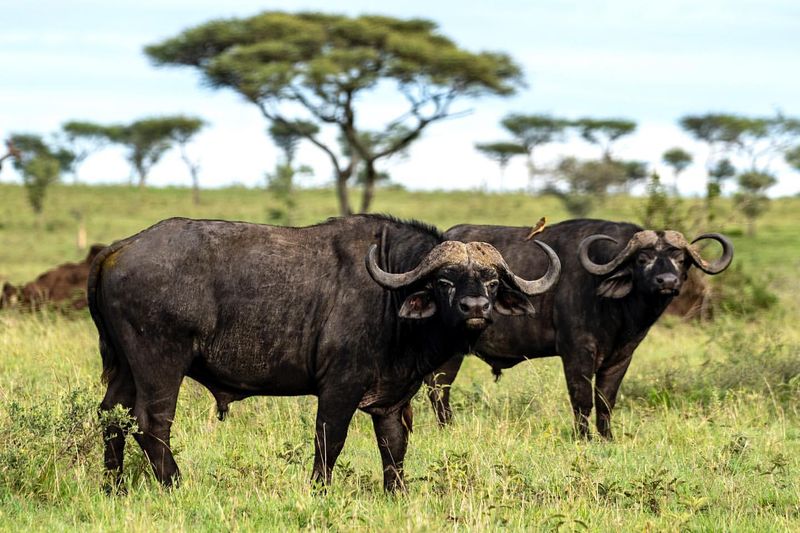
Among Africa’s Big Five, the Cape buffalo is renowned for its unpredictability and ferocious nature. Cape buffaloes are strong and persistent, with a robust build that is both imposing and intimidating. They are known for their remarkable memory and can hold grudges, which makes them particularly dangerous if they perceive a threat.
When encountering a Cape buffalo, it’s imperative to remain vigilant and cautious. These animals travel in herds, and their protective nature can lead to aggression if they sense danger. Always keep a safe distance and never attempt to corner or provoke them.
If charged, finding a large tree or obstacle to use as a barrier can be a lifesaving tactic. Understanding the buffalo’s behavioral cues is vital to ensuring safety when in their presence.
5. Cone Snail
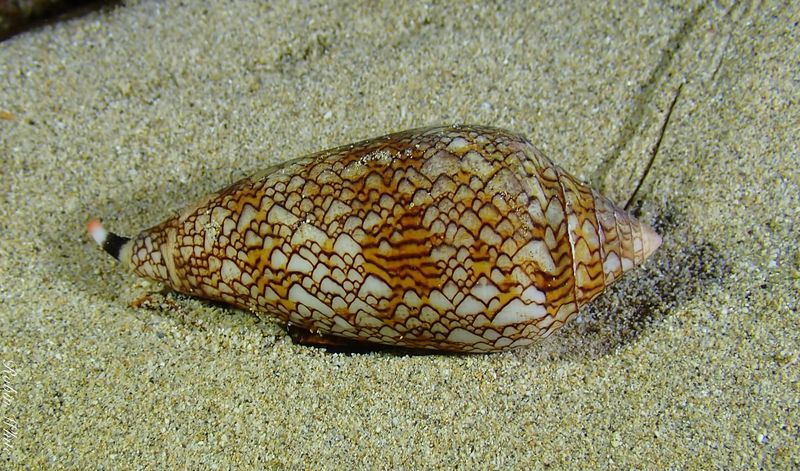
The unassuming beauty of the cone snail masks its deadly potential. Found in warm tropical oceans, these snails have shells with intricate patterns, making them appealing to collectors. However, their venomous sting can be fatal to humans.
Cone snails use a harpoon-like structure to inject venom into their prey, which can paralyze and kill small fish. When exploring coral reefs or collecting shells, exercise extreme caution. The cone snail’s sting is not only powerful but can penetrate gloves and thin wetsuits. Immediate medical attention is essential if stung.
It’s wise to admire these creatures from afar, respecting their place in the ocean ecosystem. Avoiding direct contact and educating oneself about their habitats can prevent dangerous encounters.
6. Hippopotamus
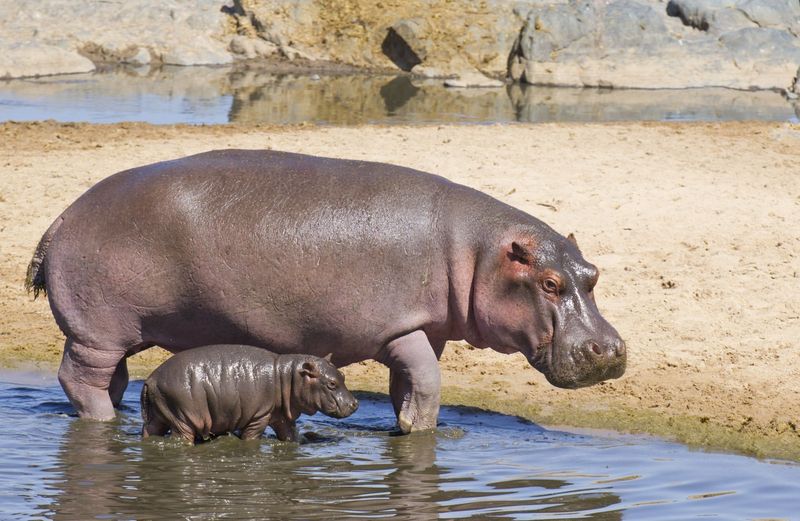
Despite their seemingly docile appearance, hippopotamuses are one of Africa’s most dangerous animals. They are responsible for more human fatalities in Africa than any other large animal. Hippopotamuses are highly territorial and can be extremely aggressive, especially when their young are threatened.
Their large size and powerful jaws enable them to cause significant harm. They can bite with incredible force, capable of crushing bones and even boats. When near water bodies inhabited by hippos, maintaining a safe distance is crucial. Avoiding water activities in hippo territories can prevent unexpected encounters. If traveling by boat, ensure it is sturdy and maneuverable.
Hippos are surprisingly fast both on land and in water, so swift escape options should be considered. Understanding and respecting their behavior is key to avoiding dangerous interactions.
7. Pufferfish
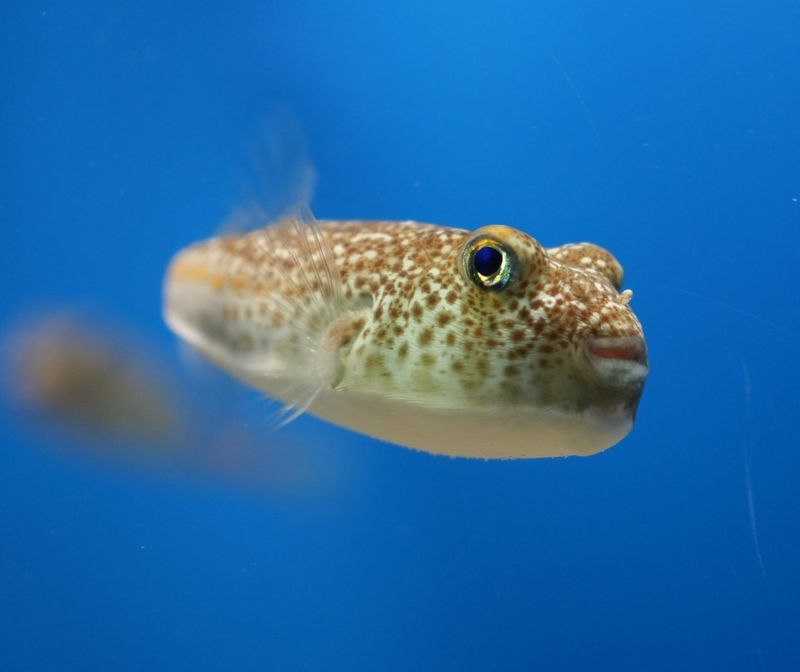
The pufferfish might appear endearing with its rounded body and expressive eyes, yet it harbors a deadly secret. Found in warm and temperate seas, pufferfish contain tetrodotoxin, a potent poison. Tetrodotoxin is a substance much more toxic than cyanide, and there is no known antidote.
When threatened, pufferfish can inflate to deter predators, but their real danger lies in their toxin. Consuming improperly prepared pufferfish can be fatal to humans. Those who wish to try pufferfish as a delicacy must ensure it is prepared by licensed chefs who are trained to remove toxic parts carefully.
Admiring pufferfish in their natural environment should be done without touching or provoking them. These precautions are vital as the toxin can be lethal even in small amounts. Awareness and proper handling are essential when dealing with this colorful yet hazardous fish.
8. Tsetse Fly
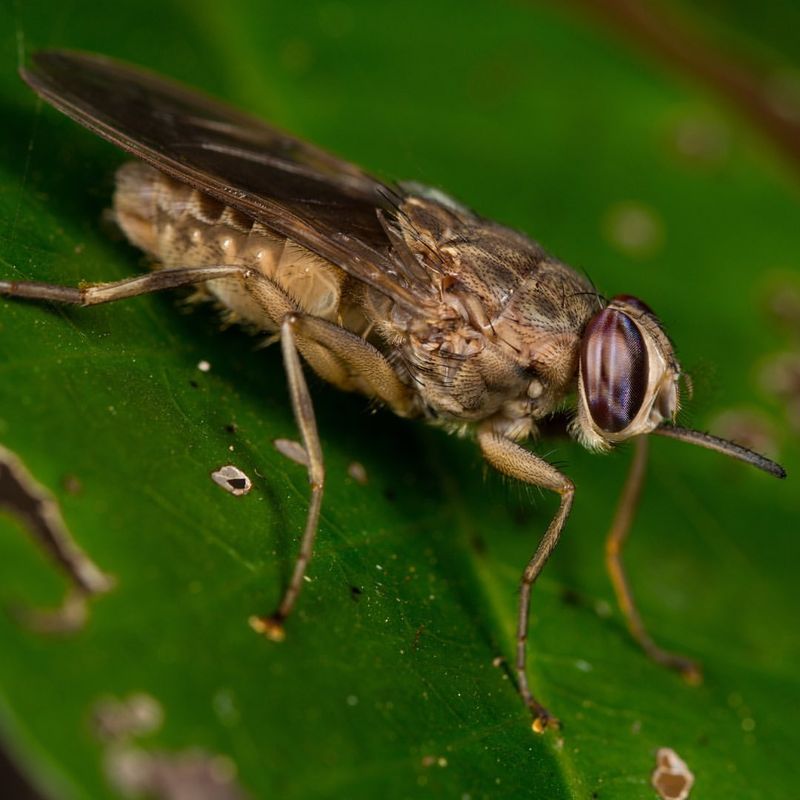
A tiny yet formidable foe, the tsetse fly is notorious for transmitting sleeping sickness across sub-Saharan Africa. While they may resemble ordinary houseflies, their bite can lead to severe illness. Sleeping sickness, caused by the parasite Trypanosoma, affects both humans and animals.
The disease progresses from flu-like symptoms to neurological complications, making early treatment critical for recovery. The tsetse fly thrives in rural areas, near rivers and woodlands. Preventive measures include wearing neutral-colored clothing and using insect repellent in areas where tsetse flies are prevalent.
Avoiding dense vegetation and staying in well-screened areas can reduce the risk of bites. Early diagnosis and treatment are vital for those affected by sleeping sickness. Awareness and preventive strategies are essential in regions where the tsetse fly is common.
9. Poison Dart Frog
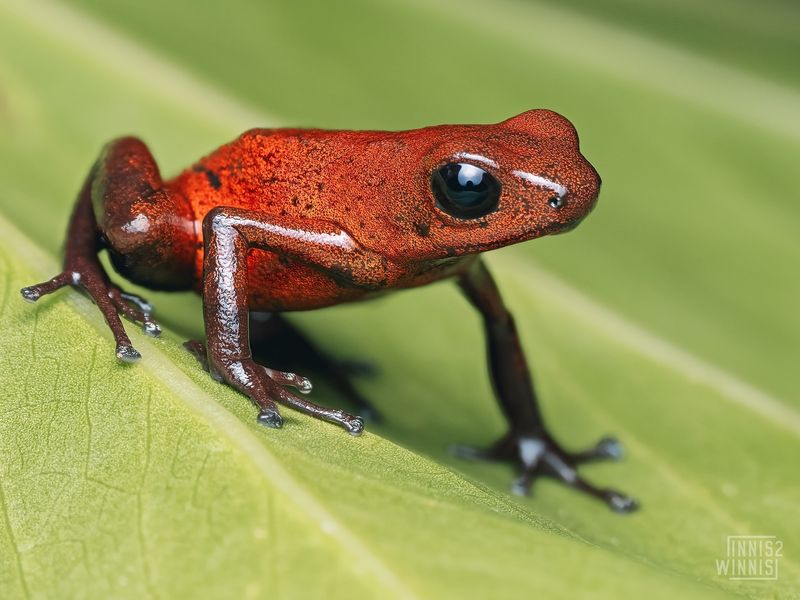
The vivid colors of poison dart frogs are nature’s warning signs. These small amphibians, native to Central and South American rainforests, contain potent toxins in their skin that can be lethal to predators and humans alike.
While these frogs do not bite or sting, their toxins can be absorbed through the skin. Indigenous peoples have used their poison to coat blow darts for hunting, showcasing its effectiveness even in small doses. The frogs’ bright colors serve as a deterrent to potential threats.
Avoiding direct contact with these frogs is crucial. If you encounter them in the wild, do not touch or handle them. Admiration from a distance is the safest approach. Conservation efforts are essential to protect these unique creatures and their habitat. Education about their role in the ecosystem and the dangers of their toxins is vital for those exploring their native environments.
10. Blue-Ringed Octopus
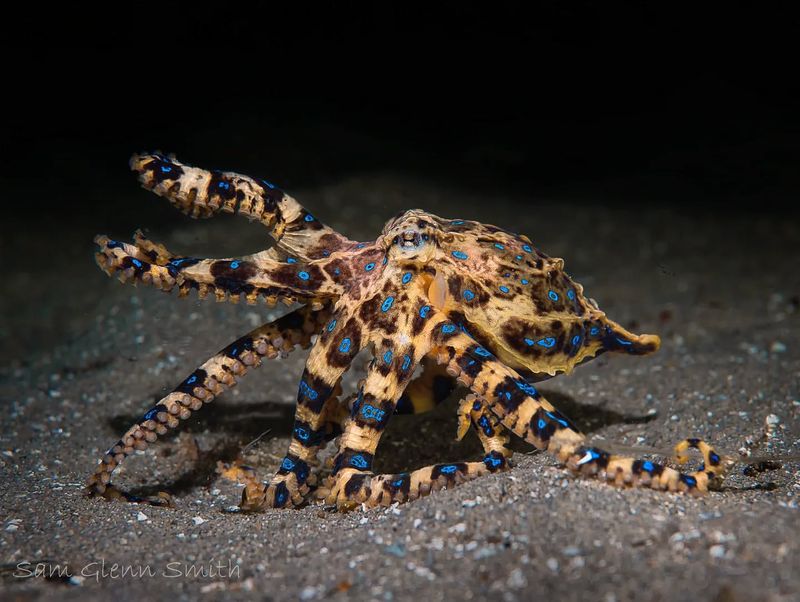
Residing in the shallow waters of the Pacific and Indian Oceans, the blue-ringed octopus is a small but exceedingly venomous marine creature. Its striking blue rings serve as a warning when it feels threatened. The blue-ringed octopus carries a powerful neurotoxin, tetrodotoxin, which can cause paralysis and respiratory failure in humans.
A sting from this octopus requires urgent medical intervention due to the lack of an antidote. Respecting their space and avoiding handling them is paramount when diving or snorkeling in their habitat.
Observing these creatures from a safe distance prevents accidental encounters. If bitten, seeking immediate medical attention is crucial, as symptoms can progress rapidly. Education and caution are key when exploring areas where these octopuses are found.
11. Komodo Dragon
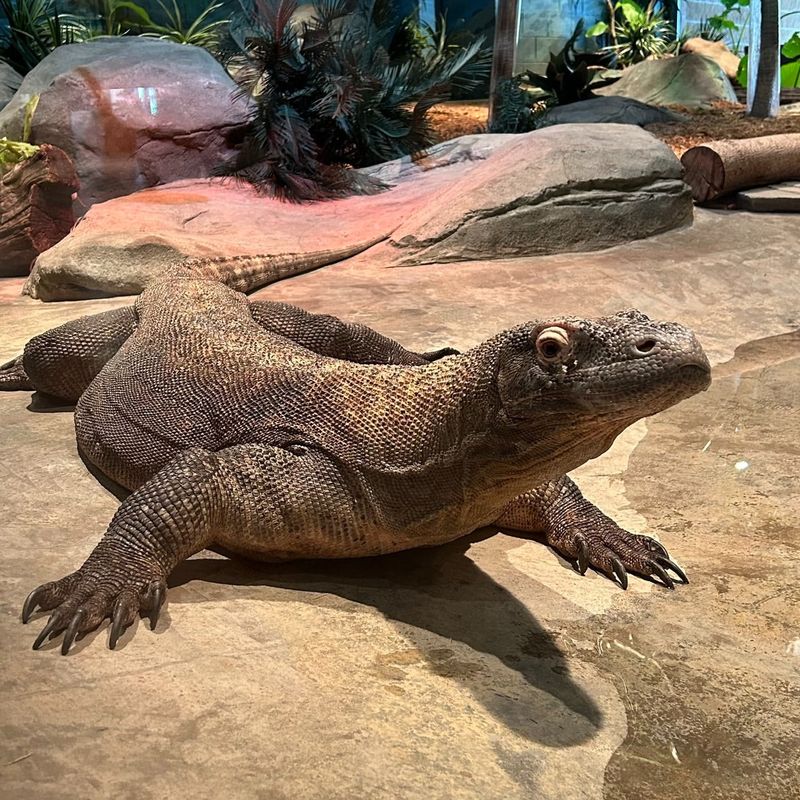
The Komodo dragon, native to Indonesia, is the world’s largest and heaviest lizard. It is a skilled predator with a powerful build capable of taking down large prey, including deer and water buffalo. Komodo dragons possess a unique combination of venomous saliva and bacteria that can cause severe infection.
Their stealth and ambush tactics make them formidable hunters. Human encounters with Komodo dragons can be dangerous, especially if they feel threatened. Visitors to Komodo Island should follow strict guidelines, including staying with a guide and keeping a safe distance. Feeding or provoking these creatures is discouraged as it increases the risk of aggression.
Understanding their behavior and respecting their territory ensures a safe and memorable experience. Being aware of their potential danger is crucial for those exploring their natural habitat.
12. Stonefish
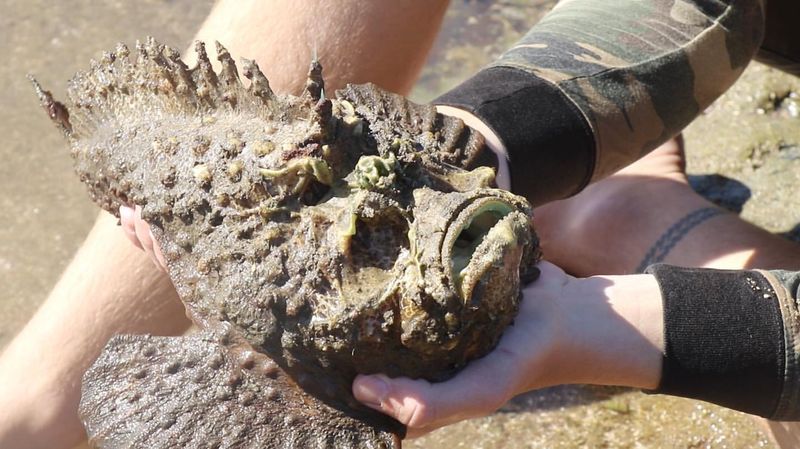
Often mistaken for a harmless rock, the stonefish is among the most venomous fish in the world. Found in the shallow coastal waters of the Indo-Pacific, its camouflaged appearance makes it difficult to spot. The stonefish has dorsal spines that release venom when pressure is applied, making it hazardous to unsuspecting swimmers and divers.
When exploring marine environments, wearing protective footwear and being cautious of where you step can prevent accidental stings. If stung, immediate medical attention and immersion of the wound in hot water can help alleviate pain and neutralize venom.
Awareness and caution are vital when in areas known to harbor stonefish. By respecting the ocean’s inhabitants, one can safely enjoy the wonders of the marine world without incident.
13. Brown Recluse Spider
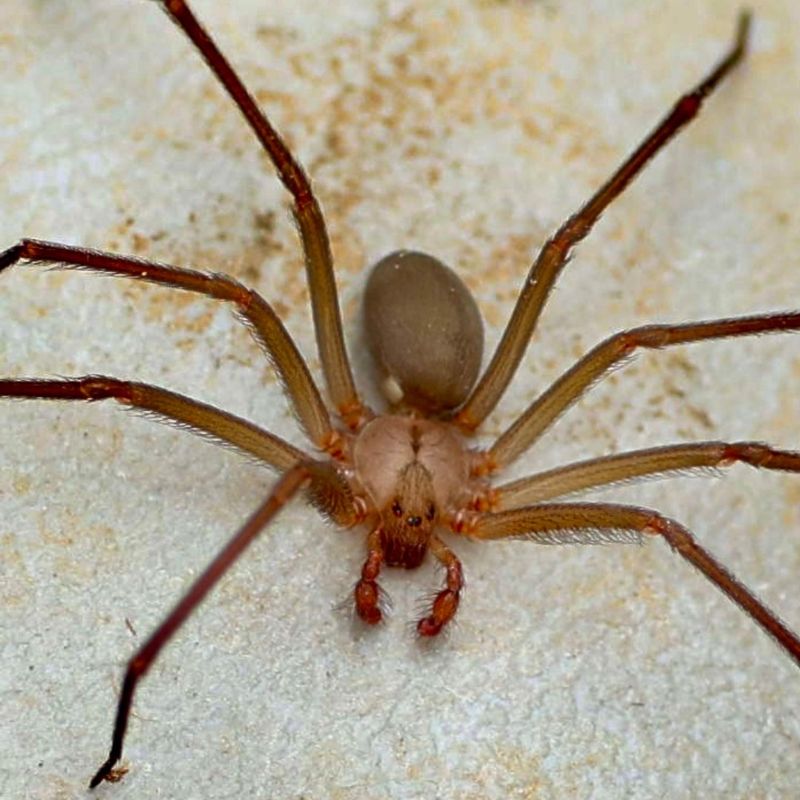
The brown recluse spider is a shy yet potentially dangerous arachnid found in the United States. Its venom can cause severe skin necrosis, leading to long-term health complications if left untreated. This spider prefers secluded, dark areas such as closets, attics, and under furniture.
Its bite is often painless initially, making it difficult to detect until symptoms develop. Early treatment is crucial to prevent serious tissue damage. To minimize encounters, regular cleaning and decluttering of spaces they may inhabit is recommended. Wearing gloves when moving stored items and being cautious when reaching into dark corners can prevent bites.
If bitten, seeking medical attention promptly is essential. Understanding their habitats and behavior can mitigate risks associated with this reclusive spider.
14. Cassowary
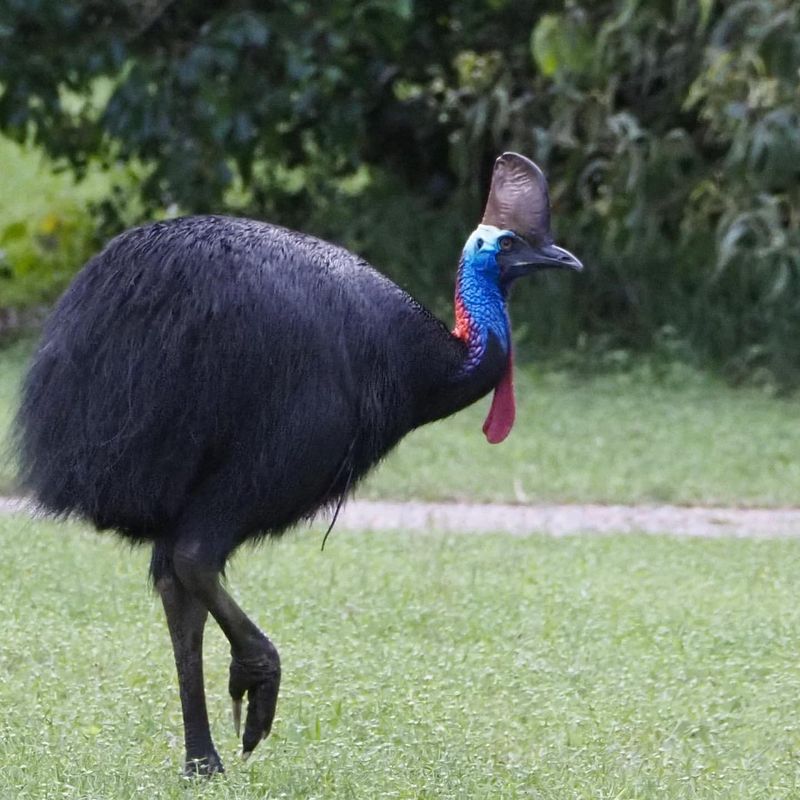
With its striking appearance and powerful legs, the cassowary is one of the world’s most dangerous birds. Found in the rainforests of Australia and New Guinea, it is known for its aggressive behavior when threatened.
The cassowary can inflict serious injuries with its sharp claws, capable of delivering fatal blows. It is highly territorial and will defend itself vigorously if provoked, making it a formidable adversary. When in cassowary territory, maintaining a safe distance is paramount.
Avoid feeding or approaching these birds, as it can lead to aggressive encounters. If confronted, standing tall and slowly backing away can help diffuse the situation. Understanding and respecting their space ensures safety for both humans and these magnificent birds.
Recognizing their potential danger is crucial for those exploring their natural habitats.
15. Black Mamba
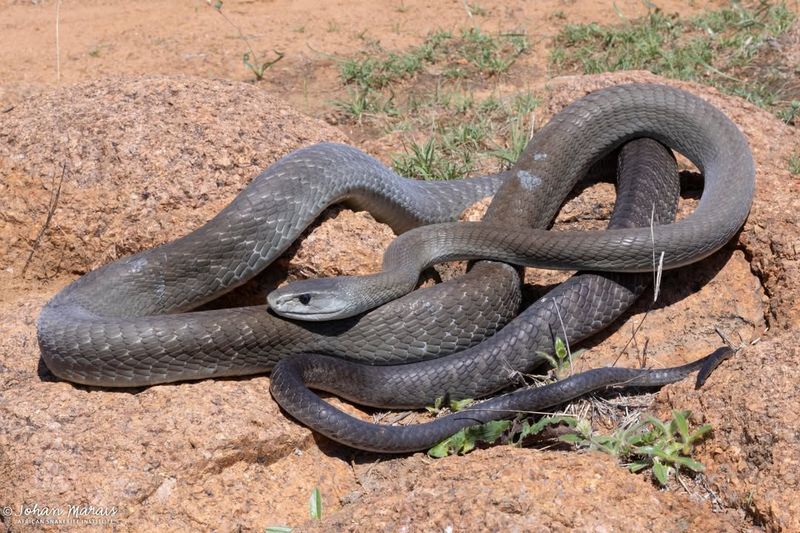
The black mamba, a native of sub-Saharan Africa, is one of the world’s most feared snakes. Known for its speed and potent venom, it poses a significant threat to those who cross its path. This snake is highly aggressive when threatened and can deliver multiple bites in quick succession.
Its neurotoxic venom can rapidly incapacitate prey, leading to paralysis if not treated swiftly. The black mamba’s speed allows it to escape or defend itself with ease. Avoiding areas where black mambas are known to reside can minimize risks. If encountered, keeping a safe distance and remaining calm is crucial.
Seeking immediate medical attention in case of a bite is essential, as antivenom can save lives. Education and awareness of their habitats and behavior are vital for ensuring safety in regions where these snakes are prevalent.
16. Brazilian Wandering Spider
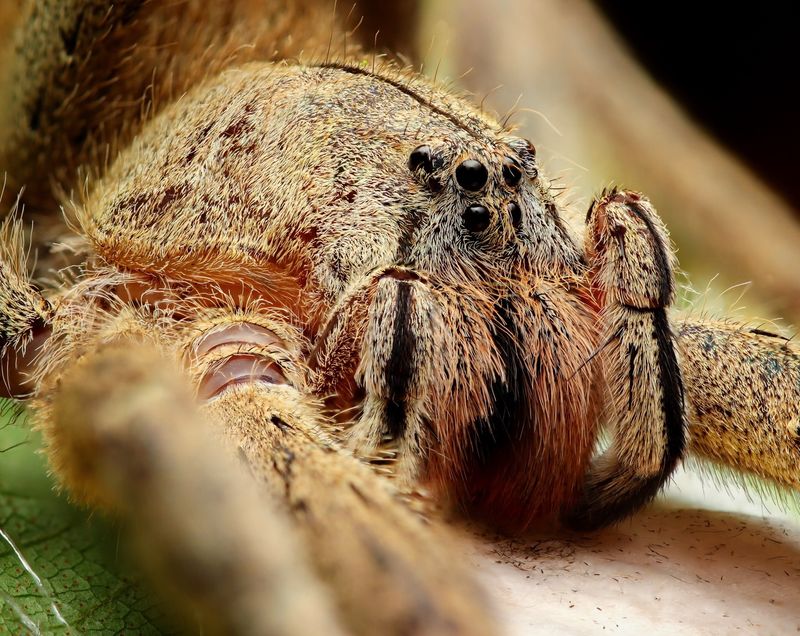
The Brazilian wandering spider, also known as the banana spider, is infamous for its potent venom and aggressive nature. Found in the jungles of South America, it is regarded as one of the world’s most venomous spiders.
Unlike many spiders, the Brazilian wandering spider does not build webs. It roams the forest floor at night, hunting for prey. When exploring regions where these spiders are common, exercising caution is essential. Shaking out clothing, shoes, and bedding before use can prevent accidental encounters. If bitten, seeking prompt medical attention is vital.
Understanding the spider’s habits and habitat can mitigate risks. Awareness and respect for their presence are crucial for those venturing into their territories.
17. Bull Shark
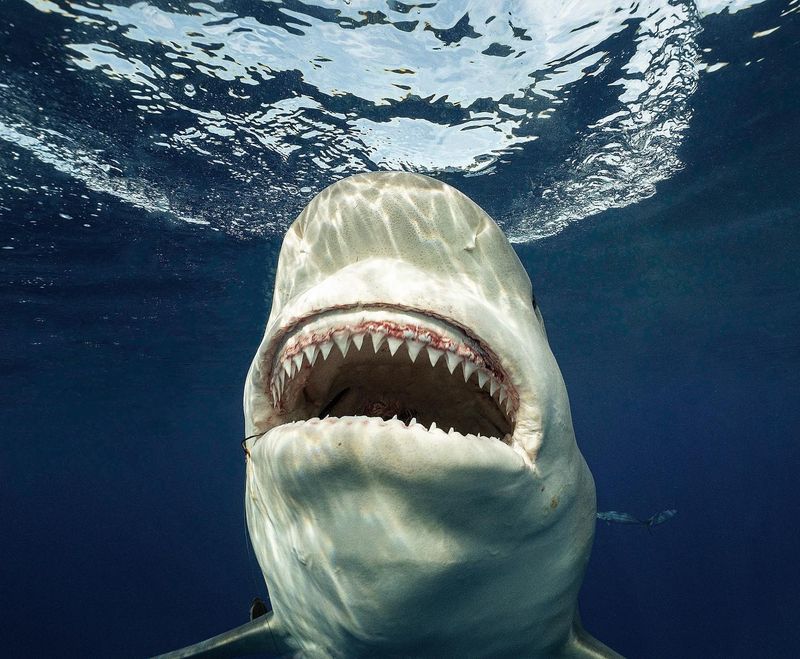
Bull sharks are notorious for their aggressive nature and ability to inhabit both salt and fresh water. Found in warm, shallow waters worldwide, they are among the most dangerous sharks to humans. These sharks are highly territorial and are known for their unpredictable behavior.
They have been implicated in a large number of unprovoked attacks on humans, more than any other shark species. Their presence in rivers and coastal waters increases the likelihood of encounters. When swimming or diving in areas known to have bull sharks, taking precautions such as avoiding murky waters and refraining from wearing shiny objects can reduce risks.
Staying in groups and adhering to local guidelines can enhance safety. Education and awareness of their behavior are vital for ensuring safe interactions with these formidable predators.

